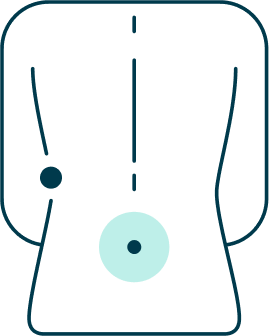Intradiscal techniques
Intradiscal techniques in pain management
Intradiscal techniques include those procedures in which we access the interior of the damaged disc and administer substances or perform procedures for therapeutic purposes to treat pain.

Types of intradiscal techniques
For discogenic pain
- Treatment with methylene blue: a substance with anti-inflammatory capacity that reduces the painful stimulus produced inside the disc.
- Stem cell treatment: anti-inflammatory and regenerative treatment that improves the condition of the intervertebral disc.
- Radiofrequency treatment (biacuplasty): this technique reduces the conditions inside the disc that cause pain inside the disc.
For radicular pain
- Treatment with gel-like substances with the capacity to be reabsorbed from the protruded or herniated disc itself and with a powerful anti-inflammatory action.
- Treatment with radiofrequency and subtraction of part of the disc: technique that allows to reduce by means of electricity the protruded / damaged disc reducing the compression of the nerve and thus the inflammation that produces the pain of the leg. Thanks to the use of a subtraction system, part of the disc compressing the nerve can be removed.
- Laser treatment: a technique that reduces the amount of protruded or damaged disc, decreasing the compression of the nerve and thus the inflammation that causes leg pain.
For which pathologies is it indicated
For which pathologies is treatment by intradiscal techniques indicated?
- Discogenic pain
- Radicular pain (or sciatica)
Procedure
In order to correctly apply the treatment by means of intradiscal techniques and to obtain the effectiveness that it can provide, a correct diagnosis and evaluation of the patient will be essential. For this, a medical visit is essential, in which the doctor will ask specific questions that, together with the physical examination and evaluation of the complementary tests, will make it possible to determine more precisely the cause or causes of the pain. The specific treatment will be applied according to each case and taking into account the pathology that we are going to address.
- No hospitalization is required in most cases.
- Mild degrees of sedation can be applied together with local anesthesia.

Our customers say
Insurance companies
Ask your MIVI centre for information on the agreements with insurance companies.










